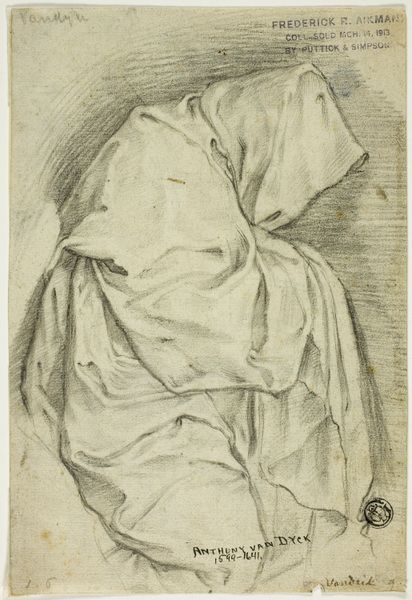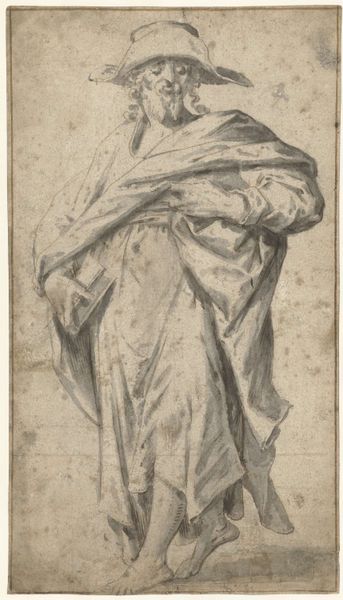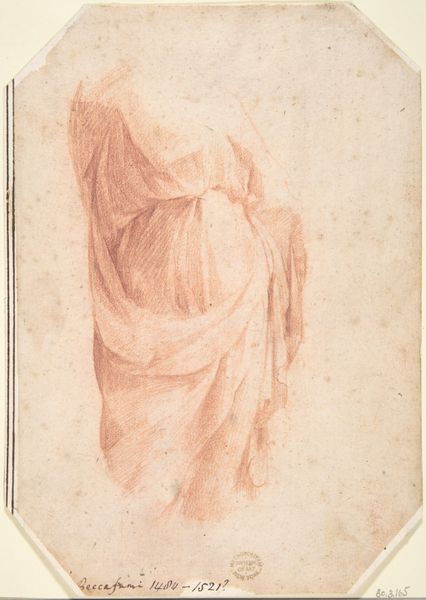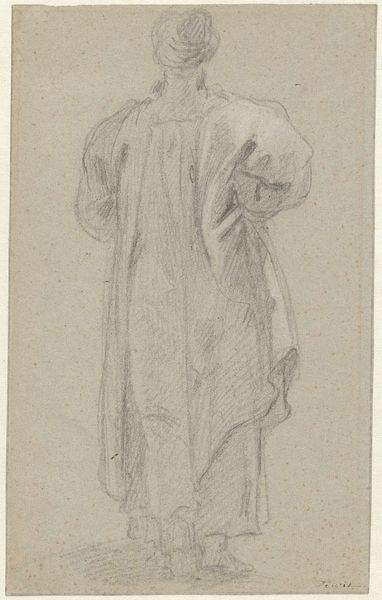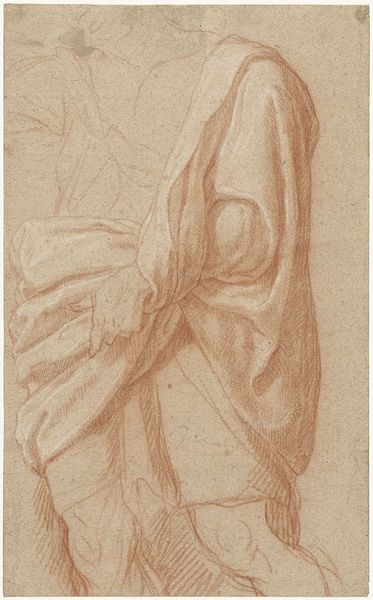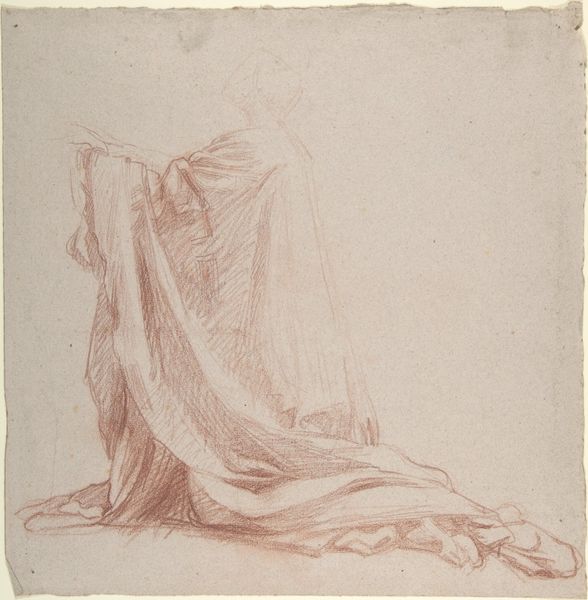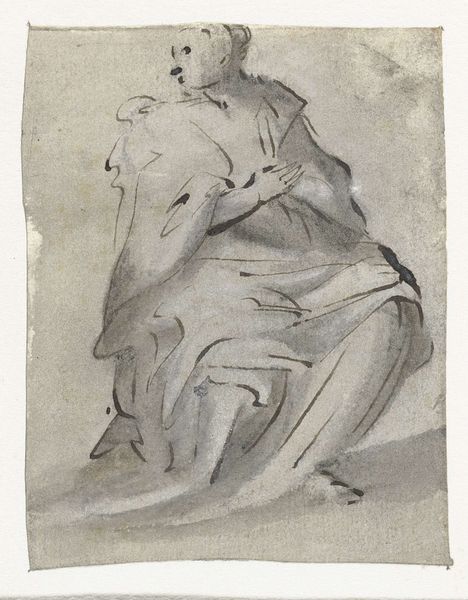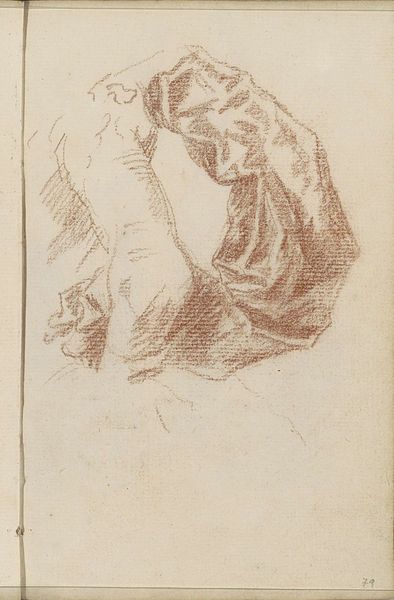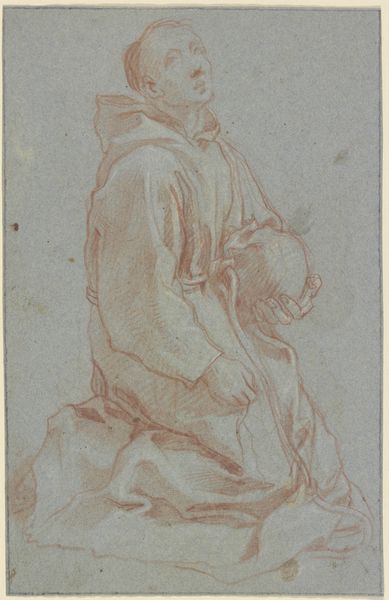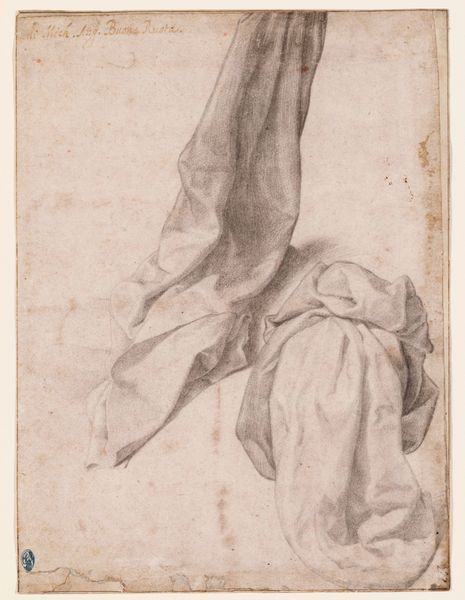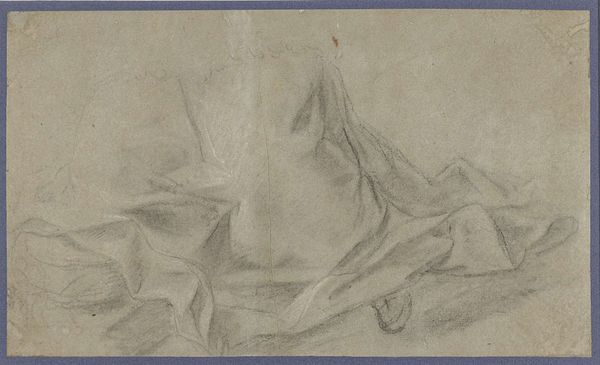
drawing, pencil
#
portrait
#
pencil drawn
#
drawing
#
baroque
#
pencil sketch
#
pencil drawing
#
pencil
#
portrait drawing
Dimensions: height 206 mm, width 164 mm
Copyright: Rijks Museum: Open Domain
Curator: Here we have Anthony van Dyck’s “Gewaadstudie,” dating from sometime between 1610 and 1641 and residing here at the Rijksmuseum. Editor: It's fascinating, really. The density of shading, especially around the folds, gives the fabric a palpable weight. There's something inherently serious and solemn about it. Curator: Indeed. This drawing presents us with an exquisite example of Van Dyck's preparatory work. "Gewaadstudie", or "study of robes" allows insight into the broader context of 17th century fashion and its use as a marker of status, gender, and identity. Editor: Yes, but even beyond its documentary function, notice the strategic use of line. The soft gradations create an almost sculptural volume; it’s as if the fabric exists in three dimensions, independent of the paper. The dynamism conveyed is absolutely sublime. Curator: Considering the symbolic weight associated with attire during the Baroque period, we might even explore the intentionality behind such a study. Van Dyck was interested in more than surface texture; he explored its profound visual impact through a combination of pencil shading techniques to construct social position. Editor: I can see how it would certainly give later works even greater depth of visual expression. The use of pencil shading alone makes it incredible—a monochromatic exercise in conveying texture and weight. Curator: It also demonstrates the critical role costume played in creating visual rhetoric during that time. We see van Dyck's interest in exploring this semiotic system. How do these billowing robes inform our understanding of privilege? Who had the financial means to acquire clothing as artworks? Editor: Looking at it formally, what I admire is his restraint. He’s given us just enough to grasp the essence of the material without unnecessary detail. It's as pure form that manages to tell so much, in this unfinished and fleeting format. Curator: In essence, it's a meditation on fabric. With an interrogation of Baroque-era class and power structures, rendered in pencil strokes. It serves as a valuable window into how attire was utilized and perceived during the Dutch Golden Age. Editor: I agree completely. And even outside those layers, just observing the artistry itself delivers aesthetic and structural profundity.
Comments
No comments
Be the first to comment and join the conversation on the ultimate creative platform.

